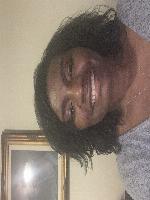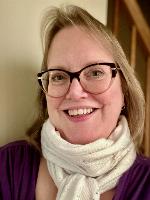Take Me to the Moon and Back With Sewable Electronics!
,
Colorado Convention Center, Mile High Ballroom 4EF
Presenters



Session description
Purpose & objective
It’s going to take people who know how to sew and integrate electronics and sensors to build space suits that can take us to the moon (or Mars) and back! Sewable electronics combine traditional craft processes (sewing, fashion design, and textile design) with electrical engineering, computer science, and hardware skills.
With sewable electronics, you can create e-textiles (electronic textiles), which are often wearable, flexible projects that look less like traditional electronics and more like fashion. Many e-textile projects replace the wiring with flexible conductive materials such as conductive thread and fabric. The skills gained in this session can be applied to creative projects in e-textiles, smart garments, fashion, design, and even soft toys!
During this session, attendees will design a simple e-textile with an integrated sensor and will gain access to lesson plans and resources to bring these hands-on activities into their own classrooms. No programming or sewing experience is necessary.
This hands-on workshop will inspire educators to build learning opportunities for students that develop skills in authentic processes of computational thinking that include problem-solving, critical thinking, inquiry, inventing, exploring, and discovering (21st Century Skills), all embedded within artistic processes of creating, performing/presenting/producing, responding, and connecting.
Outline
Starting with Art, we will explore real-world examples, where participants will brainstorm something they might need if they were an astronaut on the moon. Ideas might include sensing oxygen levels, temperatures, or light. After brainstorming some ideas, participants will learn to create a switch circuit while exploring a mix of differently colored LEDs. Participants will then experiment with different techniques and materials to select the technique that best fits their design idea. Participants will have time to fabricate their idea, take reflective notes, and share ideas with the group. The session concludes with a gallery walk, and a tour of online resources and more information.
Supporting research
Makers in Schools: Entering the Fourth Industrial Revolution (2018) Brown, S. & Liedahl, B.
Martinez, S. L., & Stager, G. (2013). Invent to Learn: Making, tinkering, and engineering in the classroom. Torrance, CA: Constructing Modern Knowledge Press.
Mountsfield Makersville. (n.d.). Retrieved June 18, 2018, from https://sites.google.com/gotvdsb.ca/mountsfieldmakersville/home?authuser=0
Papert, S., & Solomon, C. (1971). Twenty things to do with a computer. Cambridge, MA: Massachusetts Institute of Technology, A.I. Laboratory.
Qi, J. (2012).The Fine Art of Electronics: Paper-based Circuits for Creative Expression. http://web.mit.edu/~jieqi/Public/Jie_Qi_MS_thesis.pdf
Solomon, C. (1986). Computer environments for children: A reflection on theories of learning and education. Cambridge, MA: MIT Press.
Session specifications
Laptop: Chromebook, Mac, PC
Tablet: Android, iOS, Windows
Creative Communicator
- Students create original works or responsibly repurpose or remix digital resources into new creations.
- Students understand the fundamental concepts of technology operations, demonstrate the ability to choose, use and troubleshoot current technologies and are able to transfer their knowledge to explore emerging technologies.
- Students exhibit a tolerance for ambiguity, perseverance and the capacity to work with open-ended problems.
 Return
Return Explore and create: Deep-dive Creation lab
Explore and create: Deep-dive Creation lab  Trips and Tours
Trips and Tours Preregistration Required
Preregistration Required